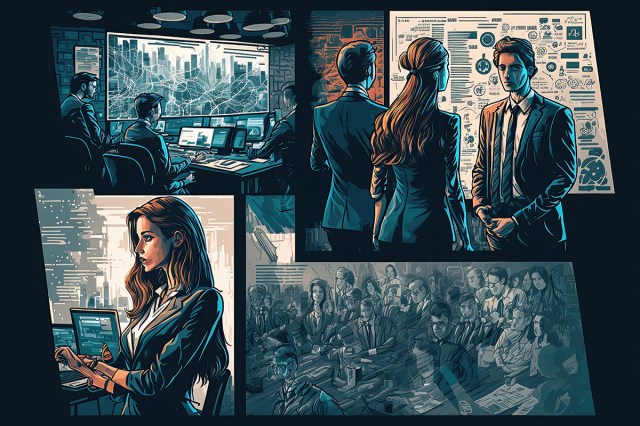
TL;DR
- A group of McKinsey’s technology practice leaders have taken a look at what 2023 might hold, and offer a few tech resolutions to consider.
- 2023 will likely be a more sober year in tech, meaning managers will have to search for ways to do more with less, find value where innovations overlap, and strategically invest in technologies that are hitting a tipping point.
- Take advantage of decentralized AI capabilities — and what this technology might mean for your business model, McKinsey advises.
READ MORE: Where Is Tech Going in 2023? (Harvard Business Review)
5G, AI, and cloud are hitting tipping points for mass adoption, with disruption and possibility likely to impact media and entertainment first, according to analysts at McKinsey.
In its predictions of tech trends to watch, McKinsey highlights AI “decentralization” — the trend of expanding access to advanced AI technologies that were traditionally available only to players with access to massive, centralized proprietary data sets.
“Products such as Stable Diffusion and ChatGPT have enabled a wider set of enterprises as well as individuals to access and interact with deep learning models that otherwise would be restricted to institutions with very large datasets,” the consultancy says.
The implications are enormous — and will likely disrupt M&E first.
“The big challenge and opportunity for companies in 2023 will be to take advantage of these decentralized AI capabilities,” McKinsey advises. “The goal should be to have AI-driven intelligence built into every part of the technology stack.”
It also believes that the combination of advanced mobility, advanced connectivity, and applied AI will be multiplicative, not additive.
The analyst cites research that companies are looking to move about 60% of their IT estate to cloud by 2025; and more than half of companies report they’ve adopted AI in at least one function in their business.
“These aren’t the sexiest investments, but automating processes, investing in data foundations, cleaning up tech debt, and continually renewing the IT architecture are needed for the business to have a chance of taking full advantage of the new technologies coming online.”
Most corporate forays into the cloud to date have been limited to simply moving applications from their own servers (often referred to as “lift and shift”), or building test and development environments to try out new programs. But now is the time to think bigger and smarter.
McKinsey urges companies to focus on building out strong cloud foundations that allow them to take advantage of the most important benefits that cloud provides (e.g., scaling applications or automatically adding capacity to meet surges in demand).
That requires putting in place strong cloud economics capabilities, called FinOps. Recent McKinsey research has shown that companies tend to not really focus on cloud costs until they break $100 million, “which is not just a tremendous waste but also a wasted opportunity to generate value,” the consultancy says.
“FinOps capabilities can monitor and track spend, determine the unit economics for various cloud usage scenarios, and translate the business’ consumption needs into optimal cloud offerings and pricing arrangements.”
Companies should also take the opportunity to automate security as they migrate applications to the cloud. This is because businesses themselves as well as cloud service providers are “upping their own security game,” for example, by automatically scanning code uploaded by developers and rejecting code with vulnerabilities.
In another trend, the analyst says that CTOs will need to master the art of doing more with less. This is less of a blunt attempt to wring more productivity out of R&D teams than a bid to use talent better.
“The trap will be to ask your tech people to simply do more,” analysts warn. “Instead, try getting them to do less — less admin work, less bureaucratic work, less manual work. There are huge amounts of productivity there for the taking.”
Specific steps include adopting more automation to remove manual tasks that weigh down engineers. Even relatively simple fixes, like cutting down on meetings, says McKinsey, can free up substantial time.



